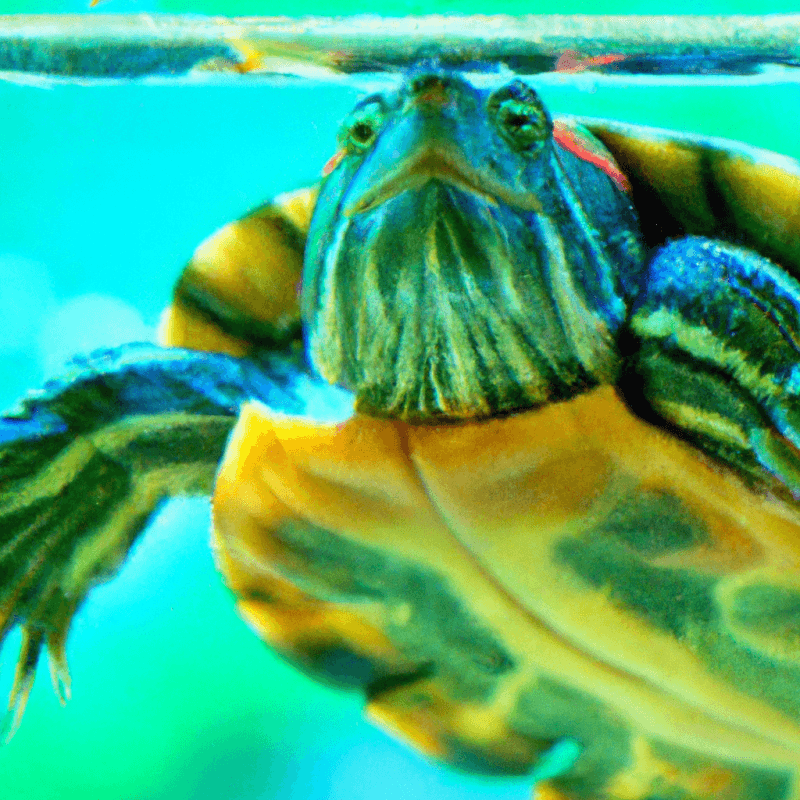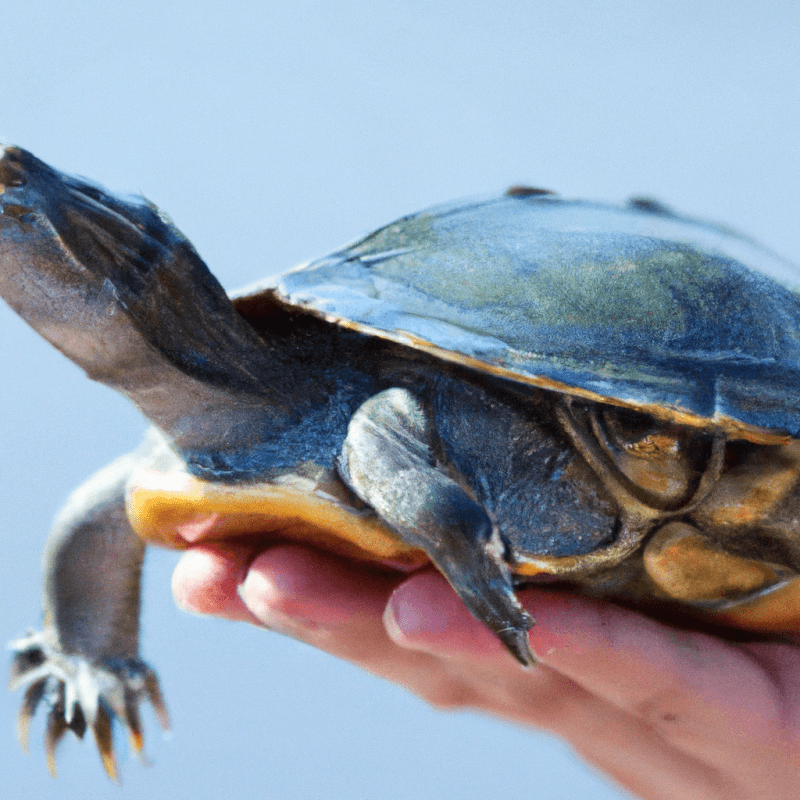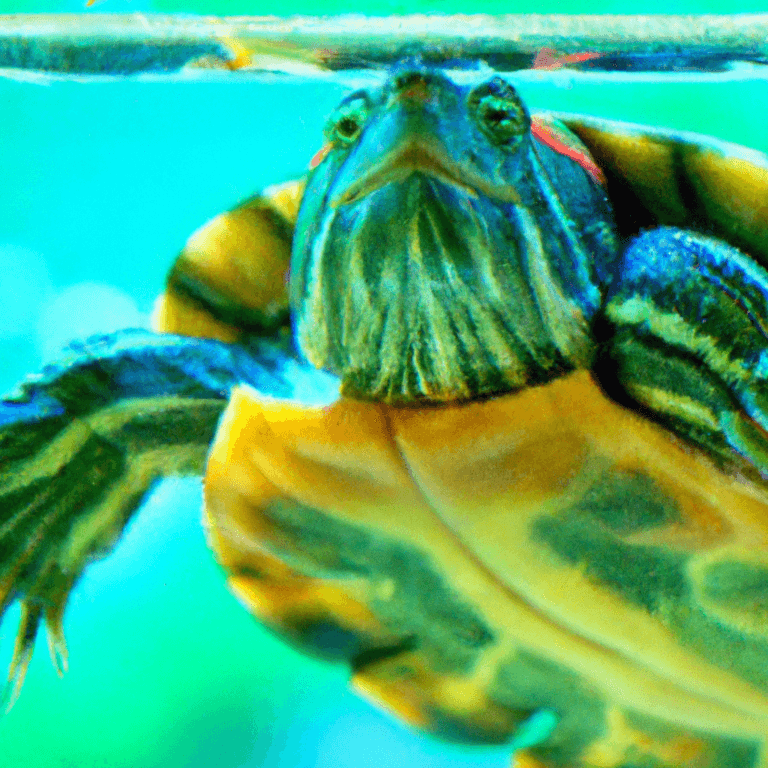So you’ve decided to bring a pet turtle into your life, but now you’re faced with the question of how exactly to care for them. Don’t worry, because in this article, we’re going to guide you through the essential steps of pet turtle care. From creating the perfect habitat to feeding them the right diet, we’ll equip you with all the knowledge you need to ensure your new reptilian friend lives a happy and healthy life. So let’s jump right in and explore the wonderful world of pet turtle care together!

Housing
Choosing the right tank or enclosure
When it comes to housing your pet turtle, it’s important to provide them with a suitable tank or enclosure that meets their specific needs. The size of the tank should be appropriate for the size and species of your turtle, allowing them ample space to swim and move around comfortably. A general rule of thumb is to provide at least 10 gallons of water per inch of the turtle’s shell length.
Ready for Cat Trivia?
Test your knowledge about cats!

In addition to the size, consider the material of the tank or enclosure. Glass tanks are a popular choice as they provide a clear view of your turtle and are relatively easy to clean. However, plastic or acrylic enclosures may be a better option for larger turtle species, as they are lightweight and can be easily customized to create a more natural habitat. Whichever material you choose, ensure that the tank has a secure lid to prevent escapades.
Providing the right temperature
Turtles are ectothermic creatures, meaning they rely on their environment to regulate their body temperature. This makes it crucial to provide them with the right temperature range in their tank or enclosure. Most pet turtle species thrive at temperatures between 75-85°F (24-29°C) during the day and slightly cooler at night.
To achieve and maintain the optimal temperature range, you can use a combination of heating elements such as heat lamps or ceramic heaters. Placing the heat source on one side of the tank allows the turtle to thermoregulate by moving to warmer or cooler areas as needed. It’s important to monitor the temperature regularly with a reliable thermometer to ensure it stays within the appropriate range.
Maintaining good water quality
Clean and well-maintained water is vital for the health and well-being of your pet turtle. Turtles produce waste that can quickly contaminate the water, leading to poor water quality and potential health issues. Therefore, regular water changes and filtration are essential.
Using a good filtration system specifically designed for turtle tanks will help keep the water clean by removing debris and maintaining proper water chemistry. The frequency of water changes will depend on the size of the tank and the number of turtles you have. As a general guideline, aim for partial water changes of around 25% every 1-2 weeks, while fully replacing the water every 1-3 months.
It’s important to note that water conditioners or dechlorinators should be used to neutralize harmful chemicals in tap water before adding it to the tank. This ensures the water is safe for your turtle and prevents any potential harm that chlorine or chloramine can cause.
Feeding
Understanding the turtle’s diet
Proper nutrition is essential for maintaining the health and vitality of your pet turtle. Different turtle species have varied dietary requirements, so it’s crucial to understand the specific needs of your turtle. Most pet turtles are omnivores, meaning they eat a combination of plant matter and protein sources.
Common dietary staples for pet turtles include leafy greens such as kale, collard greens, and dandelion greens. These provide important vitamins and minerals, as well as fiber. Turtles also require a source of protein, which can be obtained from commercial turtle pellets, insects, and fish. It’s important to research your turtle’s specific dietary needs and consult with a veterinarian specializing in reptiles to ensure their nutritional needs are met.
Offering a balanced and varied diet
To ensure your pet turtle receives a balanced diet, it’s important to offer a variety of foods. This not only helps provide the necessary nutrients, but also prevents dietary deficiencies. Supplementing their diet with calcium and vitamin D3 is also crucial, as this aids in shell and bone health.
Along with their staple greens and protein sources, it’s beneficial to incorporate other fruits and vegetables into their diet. This adds variety and increases nutritional intake. However, be cautious with certain foods as some can be toxic or harmful to turtles. Foods to avoid include avocado, rhubarb, and chocolate.
Feeding frequency and portion sizes
The frequency and portion sizes of feeding will depend on the age, size, and species of your turtle. Generally, younger turtles require more frequent feedings, while adults can be fed less often. As a general guideline, younger turtles can be fed daily, while adult turtles can be fed every 2-3 days.
When feeding your turtle, offer them a portion size that they can consume within 10-15 minutes. This helps prevent overfeeding and keeps the water cleaner for a longer period. It’s important to observe your turtle’s eating habits to determine the appropriate portion size.
Handling and Interaction
Creating a comfortable and safe environment
When it comes to handling and interacting with your pet turtle, creating a comfortable and safe environment is essential. Turtles are generally more comfortable and less stressed in their own habitat, so it’s important to minimize handling to necessary occasions.
Ensure their tank or enclosure is set up with hiding spots and ample swimming space to make them feel secure. Providing a calm and quiet environment minimizes stress and allows your turtle to feel at ease in their surroundings.
The proper way to handle a turtle
When handling your pet turtle, it’s important to do so with care and gentleness. Always wash your hands before and after handling to prevent the spread of any potential diseases. Support the turtle with both hands, one hand supporting their belly and the other hand supporting the shell.
Avoid excessive handling and be mindful of the turtle’s comfort level. If they show signs of stress or try to retreat into their shell, it’s best to give them some space and leave them alone. Remember that turtles have individual personalities and some may prefer less handling than others.
Encouraging social interaction
While turtles may not have the same social needs as other pets, they still benefit from social interaction with their owners. Spending time near their tank, talking to them, and offering them food by hand can help build trust and create a bond.
However, it’s important to remember that turtles are not social animals by nature, so they may not exhibit the same behaviors as a dog or a cat. Respect their individual preferences and always prioritize their comfort and well-being.
Healthcare
Regular veterinary check-ups
Regular veterinary check-ups are essential for the overall health and well-being of your pet turtle. Reptile veterinarians have specialized knowledge and experience in treating turtles and can provide important guidance on their care.
During veterinary check-ups, the vet will perform a thorough examination of your turtle, checking their weight, shell condition, eyes, mouth, and internal organs. They may also recommend fecal tests or bloodwork to assess their overall health. Regular check-ups help detect any potential health issues early and ensure prompt treatment.
Preventing and treating common health issues
Pet turtles are susceptible to several common health issues, including respiratory infections, shell infections, and parasites. To prevent these issues, it’s crucial to maintain optimal environmental conditions, including proper temperature, water quality, and hygiene.
Regularly inspect your turtle’s shell for cracks, lesions, or signs of infection. If you notice any abnormalities, consult with your veterinarian immediately for proper diagnosis and treatment. Similarly, if you observe any changes in behavior, appetite, or appearance, it’s important to seek veterinary care to address any potential health concerns.
Maintaining good hygiene
Maintaining good hygiene in your turtle’s enclosure is crucial for their health and well-being. Regularly clean and disinfect their tank or enclosure, ensuring to remove any waste or uneaten food promptly. This helps prevent the growth of harmful bacteria and keeps the water clean.
Along with cleaning the tank, it’s important to regularly clean and disinfect any equipment used in the tank, such as filters, basking platforms, and water heaters. Ensure that any cleaning products used are reptile-safe and rinsed thoroughly before reintroducing them into the tank.

Environmental Enrichment
Providing a suitable substrate
Providing a suitable substrate in your turtle’s tank helps mimic their natural habitat and allows them to engage in natural behaviors. There are various types of substrates available, including gravel, sand, and soil. However, it’s important to choose a substrate that is safe for your turtle and easy to clean.
For most pet turtles, using a combination of smooth river rocks and aquatic plants can be a suitable substrate choice. This allows them to explore and forage while still maintaining good water quality. Avoid using small gravel or sand that your turtle can accidentally ingest, as this can lead to digestive issues.
Adding hiding spots and basking spots
Turtles require both hiding spots and basking spots in their tank to feel secure and regulate their body temperature. Hiding spots can be created using various materials, such as rocks, driftwood, or artificial caves. These provide a sense of security and allow your turtle to retreat when they feel stressed or threatened.
Basking spots are essential for turtles to dry out and warm up. You can create a basking area by placing a platform or basking dock in the tank, allowing your turtle to climb out of the water and bask under a heat lamp. The temperature of the basking spot should be around 90-95°F (32-35°C) to provide the necessary warmth for your turtle to thermoregulate.
Offering engaging toys and activities
Environmental enrichment is important to keep your pet turtle mentally stimulated and prevent boredom. Offering engaging toys and activities can help mimic natural behaviors and provide entertainment.
Consider adding floating objects, such as floating plants or turtle balls, that your turtle can interact with. You can also introduce puzzle toys or treat-dispensing toys to encourage foraging behavior. Remember to choose toys that are safe for your turtle and free of any small parts that they can swallow.
Water Requirements
Choosing the right water source
The water source you choose for your turtle’s tank plays a vital role in maintaining their health. It’s important to provide clean, chemical-free water that is safe for your turtle to live in.
Tap water may contain chlorine or chloramine, which can be harmful to turtles. To make tap water safe, use a water conditioner or dechlorinator specifically formulated for reptiles. This removes the harmful chemicals and neutralizes any potentially harmful substances.
Dechlorinating tap water
To dechlorinate tap water, simply add the appropriate amount of water conditioner to the tank before adding fresh water. Follow the instructions on the water conditioner product for accurate dosing. Allow the water conditioner to sit for a few minutes before introducing your turtle back into the tank to ensure any chlorine or chloramine is fully neutralized.
It’s important to note that using filtered water or bottled water can also be an alternative if tap water consistently poses challenges. However, be aware that some bottled water may still contain minerals or additives that can affect water chemistry. Always check the label to ensure the water is suitable for your turtle.
Filtration and water changes
Proper filtration is essential for maintaining good water quality in your turtle’s tank. A quality filtration system ensures that waste, debris, and harmful chemicals are removed, maintaining a healthy environment for your turtle.
Investing in a canister filter or a power filter designed specifically for turtle tanks is recommended. These filters are efficient in removing impurities and maintaining water clarity. Regularly cleaning and maintaining the filter is also important to ensure optimal functionality.
Along with filtration, regular water changes are necessary to prevent the accumulation of waste and maintain good water quality. As mentioned earlier, aim for partial water changes of around 25% every 1-2 weeks, while fully replacing the water every 1-3 months. Regular water testing using a water test kit can help monitor and maintain the appropriate water parameters.

Lighting and UVB
Understanding the importance of UVB light
UVB light is essential for the health and well-being of pet turtles. It enables them to produce vitamin D3, which is crucial for proper calcium absorption and shell health. Without adequate UVB exposure, turtles can develop metabolic bone disease, a condition that weakens their bones and shell.
To ensure your turtle receives the necessary UVB light, it’s important to provide a UVB lamp specifically designed for reptiles. UVB bulbs should be replaced every 6-12 months, as their effectiveness decreases over time. Position the UVB light within the appropriate distance from the basking spot, following the manufacturer’s guidelines for optimal UVB exposure.
Choosing the right lighting setup
Apart from UVB lighting, it’s important to provide a proper lighting setup to simulate a natural day-night cycle for your turtle. This includes using a heat lamp or basking light to provide warmth and a source of light for the basking spot.
Using a timer for both the UVB light and heat lamp helps maintain a consistent lighting schedule. Aim for 10-14 hours of light per day, followed by a period of darkness. This helps regulate your turtle’s circadian rhythm and promotes healthy activity and sleep patterns.
Providing a proper light cycle
Replicating a natural light cycle for your turtle is important not only for their physical health, but also for their mental well-being. Turtles are accustomed to a regular day-night rhythm, so providing a consistent light cycle helps them maintain a sense of normality.
Ensure that the lights in the tank are turned on and off at the same time each day to establish a predictable routine. A consistent light cycle promotes healthy behavior patterns and aids in maintaining the turtle’s overall well-being.
Breeding
Determining the sex of the turtle
Determining the sex of a turtle can be challenging, especially in younger turtles. In general, male turtles tend to have a longer and thicker tail compared to females. However, this method is not foolproof and can be less reliable in some turtle species.
In many cases, it’s best to consult with a reptile veterinarian or an experienced breeder who can properly determine the sex of your turtle. They may use techniques such as ultrasound or endoscopy to accurately determine the gender.
Creating the ideal breeding environment
Creating the ideal breeding environment for turtles relies on providing the appropriate temperature, lighting, and proper nesting areas. Consult species-specific guidelines or seek advice from experts to ensure you create suitable conditions for your specific turtle species.
Turtles typically require a basking spot with a temperature gradient to encourage courtship and breeding behaviors. Additionally, providing a suitable nesting area with a mixture of soil and sand allows the female turtle to lay her eggs.
Egg incubation and hatching care
If successful breeding occurs and eggs are laid, proper care during the incubation period is crucial for the eggs’ viability. The temperature and humidity levels should be closely monitored and maintained to mimic the conditions necessary for proper egg development.
It’s important to research the specific requirements for incubating turtle eggs of your species, as each species may have slightly different needs. This includes factors such as temperature, humidity, and duration of incubation. Patience and attention to detail are essential during this stage to ensure a successful hatching process.

Common Species of Pet Turtles
Red-Eared Slider
The Red-Eared Slider is one of the most popular pet turtle species and is known for its distinctive red stripe behind its ears. They are native to the southern United States and require a large tank with ample swimming space. Red-Eared Sliders are omnivores, feeding on a combination of leafy greens, commercial turtle pellets, and protein sources.
Painted Turtle
Painted Turtles are another popular pet turtle species. They are native to North America and can be found in various freshwater habitats. Painted Turtles are omnivores, with a diet consisting of aquatic plants, insects, and small fish. They require a tank with both land and water areas, as they spend a significant amount of time basking.
Map Turtle
Map Turtles are known for the intricate pattern on their shells, resembling the contour lines of a map. They are native to North America and require a tank with a combination of land and water areas. Map Turtles are primarily herbivores, feeding on a variety of aquatic plants and occasionally accepting some protein sources.
Legal Considerations
Checking local regulations and permits
Before acquiring a pet turtle, it’s important to research local regulations and permits regarding their ownership. Laws and regulations regarding turtles can vary depending on your location, and some species may be restricted or prohibited as pets.
Contact your local wildlife agency or reptile specialist to determine the specific regulations and requirements for pet turtle ownership in your area. It’s essential to comply with these regulations to ensure both the well-being of the turtle and your legal standing.
Understanding the legality of wild-caught turtles
While some turtle enthusiasts may be tempted to keep a wild-caught turtle as a pet, it’s important to consider the ethical and legal implications. Harvesting turtles from the wild can disrupt natural ecosystems and endanger wild populations.
In many places, capturing native turtle species from the wild is strictly regulated or illegal. It’s important to understand and respect these regulations to ensure the conservation of turtle populations and the preservation of biodiversity.
Ethical considerations
Owning a pet turtle comes with ethical responsibilities. It’s important to ensure that you are able to provide a suitable and enriching environment for the turtle throughout its lifetime. This includes meeting their housing requirements, nutritional needs, and ensuring their physical and mental well-being.
Turtles can live for several decades, so it’s crucial to consider the long-term commitment and financial responsibility involved. Research and educate yourself on the particular needs of the turtle species you wish to keep to ensure you can provide them with a happy and healthy life.
In conclusion, caring for a pet turtle requires attentiveness, patience, and knowledge of their specific needs. By providing the right tank or enclosure, maintaining proper temperature and water quality, offering a balanced diet, creating a comfortable environment, and seeking regular veterinary care, you can ensure the health and well-being of your pet turtle. Remember to research the specific requirements of your turtle’s species and stay informed about local regulations to provide the best care possible. Cherish the companionship and unique characteristics of your pet turtle, and enjoy the rewarding experience of being a turtle owner.



